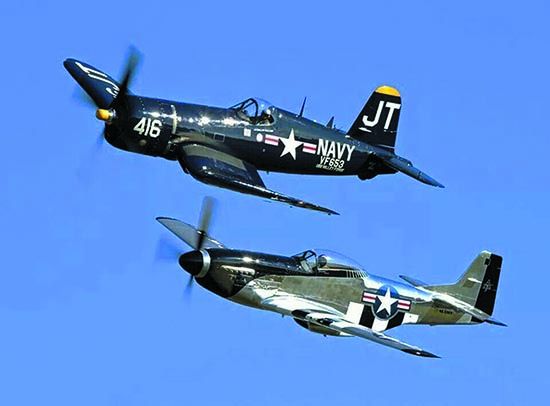You’ve finally made it. You’ve gotten the airplane of your dreams—an Extra 300, Waco Taperwing or North American P-51—and you want to display it at an upcoming airshow. Not only do you want to park it where it can be seen, you’ve been seriously practicing your aerobatics and you want a time slot in the show to demonstrate what you can do.
Fifty years ago the odds were that you could simply arrive as things were being set up at a smaller show, talk to whomever was in charge and you’d be on the program.
Not surprisingly, that didn’t work well. Overconfident, wealthy vintage aircraft owners too often demonstrated that their egos wrote checks their skills couldn’t cash.
The FAA started regulating aerobatics by requiring that anyone desiring to do them below 1500 feet AGL demonstrate her or his ability to an FAA inspector and receive what is now called a Statement of Aerobatic Competency or SAC card. If you didn’t crash, you got one. The accident rate remained high. By the 1980s the FAA was working with the International Council of Airshows (ICAS) (https://airshows.aero) because its members flew airshows, understood the risks and were determined to improve the level of safety. ICAS took over the process of evaluating pilots and issuing SAC cards. The accident rate dropped dramatically.
Now, ICAS issues cards for progressively lower level aerobatics that require the pilot demonstrate not only her or his ability annually but also engage in a minimum number of practices in a recognized aerobatic box and airshows each year. ICAS and the airshow world recognize that airshow pilot safety depends on recency and frequency of a pilot’s experience.
For the non-warbird vintage aircraft set that want to get into airshow aerobatics, Patty Wagstaff told us that she recommends they immediately join the International Aerobatic Club (IAC) (www.iac.org) and participate in their competitions. That’s where they will upgrade their skills and judgment in a structured, supportive environment and really learn how to allow for wind and master energy management.
Among the several skill sets involved in airshow performing beyond solo aerobatics are formation flights, formation aerobatics, circle-the-jumpers, dogfight and dynamic maneuvering. To fly formation in an airshow in FAA waivered airspace (a formal waiver of specific FARs for the airshow), a pilot must hold a Formation and Safety Team (FAST) card. FAST is an FAA-recognized organization that provides policy and governance to 17 FAST signatory organizations.
To obtain a FAST card a pilot must attend a formation clinic presented by one of the FAST signatories (and become a member of that organization) and then fly with a qualified instructor until trained to an acceptable level of proficiency. This usually requires several flights. You must have a FAST card for each type of aircraft that you intend to fly in an airshow.
The big dogs in the formation training world are the Commemorative Air Force (CAF) (www.commerativeairforce.org) and the North American Trainer Association (NATA) (www.flynata.org). Every airshow pilot we spoke with emphasized the need to become involved with a FAST signatory organization to obtain not only training but find mentors to help safely immerse you in the airshow world.
Not surprisingly, getting approved for other airshow skill sets such as dogfighting, night shows and dynamic maneuvering requires further training and approval.
With approvals in hand, well prior to participating in an airshow you’ll be required to provide copies of all of your credentials to the airshow sponsor. Once you arrive, plan on showing the aircraft paperwork, including logbooks, to the airshow safety personnel.
Each day that you fly you’ll be required to attend the morning briefing and read and sign a copy of the FAA-issued waiver for that day of the show.
During the briefing you’ll review all of the show lines (how far you must stay from the crowd in the type of airplane you’re flying), emergency procedures, escape routes, diversion airports, takeoff and approach routes and even where each fire truck and ambulance will be parked. Violation of a procedure is considered very serious and can result in the pilot being banned from flying airshows and an FAA violation action.
The person in charge of the show is referred to as the Air Boss—and not surprisingly being approved for that position requires additional training. The Air Boss is effectively the final authority for the show. The Air Boss is in radio contact with each performer and can halt the show at any time there is any question of safe operation. If you have an emergency, you declare it to the Air Boss and do what you need to handle things—the Air Boss will get everyone out of your way.
Bottom line—you can fly airshows if you’re willing to put in the time, hard work and training required.





